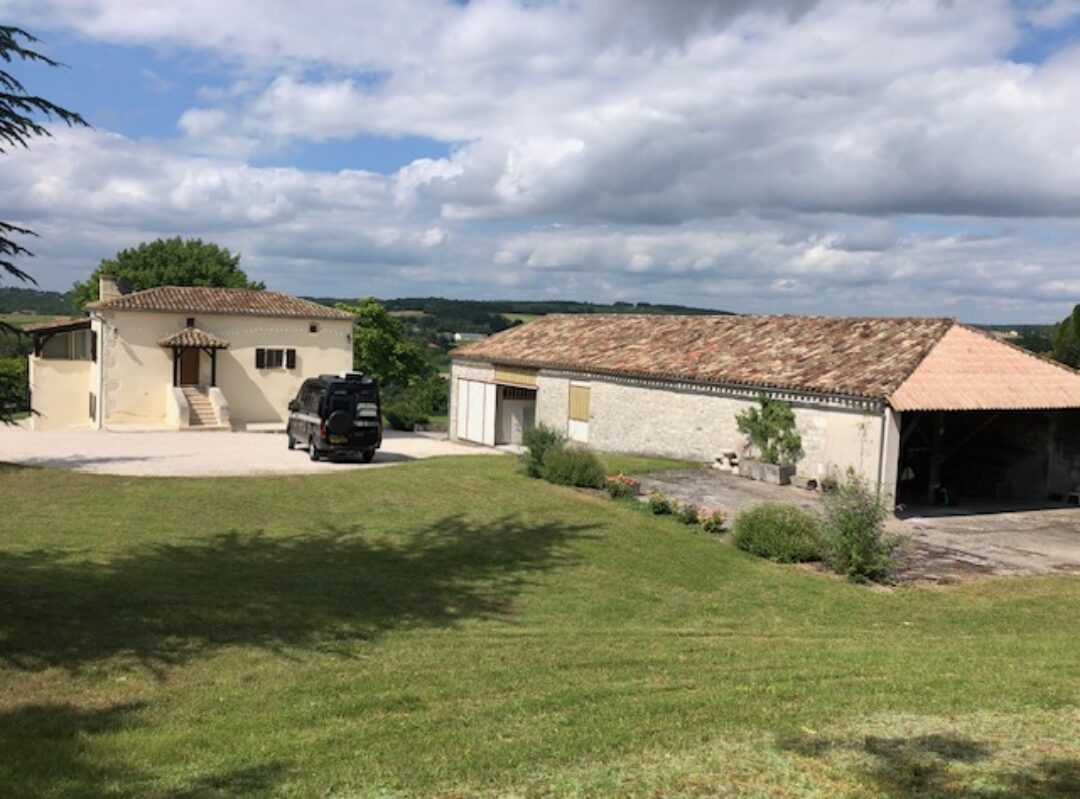The heatwave continues, as it does in the UK we hear, so it’s probably a good week to be next to a river where we can have a dip to cool down when we want. Joe has also used the cooler early morning hours to go out on his motorbike and ride some excellent nearby roads on his own, i.e. fast!
Not wanting to venture too far in the morning heat, we followed a bicycle route in the tourist app for this area and it took us on a lovely route along the river to the east via the local village of a Tour de Fauré and various locks and hamlets.

We also booked a boat trip from the port at Bouziès about 5 km to the east. To get there we set off on our bikes along the well known ‘Chemin de halage’, or towpath, between here and Bouziès, used in the early days of river navigation for donkeys or men to pull boats upriver against the current. The towpath is partly a traditional shaded footpath along the edge of the river but, at one point where the cliff rises straight from the river, the path has been cut through the stone of the cliff creating a dramatic overhang. The path was cut by local men using hand tools in the 1850s and took 4 years to complete. They couldn’t use dynamite because of the risk of collapse, so the marks of their tools are still visible. In one section of this part of the path a Toulouse based artist, Daniel Monnier, created a relief sculpture along the wall representing his vision of the Lot. The work was completed in 1989 and the artist always had the intention to complete it with a piece of ‘mirrored’ stone reflecting the river. He didn’t have the finances at the time and it took another 30 years to get all the necessary permissions to complete it in 2019.



At Bouziès we boarded the boat, a replica of one of the original flat-bottomed wooden gabares used to transport goods up and down the river. The area we are in was known for wood-turning, in particular the production of wooden taps for barrels. The commentary on the boat was surprisingly interesting about the history of the area and the river and we got to see Saint Cirq Lapopie from another angle – it’s one of those villages that looks pretty good from any angle. We also got to go through one of the locks (twice) and it is the only manned lock on the Lot with the lock keepers opening and closing the lock 50-60 times a day.


Our crew member told us about the damage that used to be caused to the riverbanks by the ‘ragondin’, known to us as coypu – a type of water rodent. To prevent this the ragondin were trapped and the question then arose of what to do with the creatures. Their fur was popular but it was also recognised that the meat was of good quality, so products such as paté and casseroles were produced. The difficulty came in convincing people to eat the product of an animal that is considered to be a rodent. As the meat reputedly tastes like hare or rabbit, some marketing was undertaken to rebrand as ‘lièvre du marais’ (hare of the marsh or swamp) to make it more palatable, although it does seem to be sold as pate de ragondin. It’s a speciality that we probably won’t be rushing to try!
The history of the Hundred Years War features prominently along the river, in particular at the ‘Chateau des Anglais’ at Bouziès. Here you can see clearly the remains of the fortifications built to guard and defend the river and to protect the population in the event of an attack.

The local town of Tour de Fauré hosts a weekly summer market which was very lively and well-attended given that it’s such a small village. Whilst vegetable purchases were being made Joe was watching some agricultural activity in an adjacent field. A large-leaf upright crop, somewhat like a very tall cabbage, was being harvested using a very well designed and engineered tractor attachment which dug up each plant in an upright position, conveyed the plant, still upright, up the attachment and then turned it into a horizontal position at the top to lay each plant on an adjacent flat bed trailer. It was an impressively efficient process watched by a few people. It wasn’t until later that we were able to identify the crop as tobacco which has been grown in this Department for several hundred years and, in fact, this area was at one time the largest tobacco growing area in France. Times have obviously changed and most of the tobacco grown is exported to Third World countries. The tobacco leaves are dried in large wooden barn-like structures – séchoirs de tabac- which are dotted over the countryside, many having been ‘repurposed’. Another crop we have been trying to identify for a little while, and have now discovered, is sorghum (le sorgho in French), a rice or millet type grain. Until now mainly grown in Africa and Asia, sorghum is also being grown in France in dry areas and can be used for both animal fodder and human consumption.



This is SO intersting. Thanks Claire x
Thanks Mary. It’s amazing what goes on around you in just a small area x
Love reading about the different places you are going to , quite jealous
Thanks Maureen. Hope all well with you. C
Yes I am not ok, just bored with same scenery, and lack of travel .